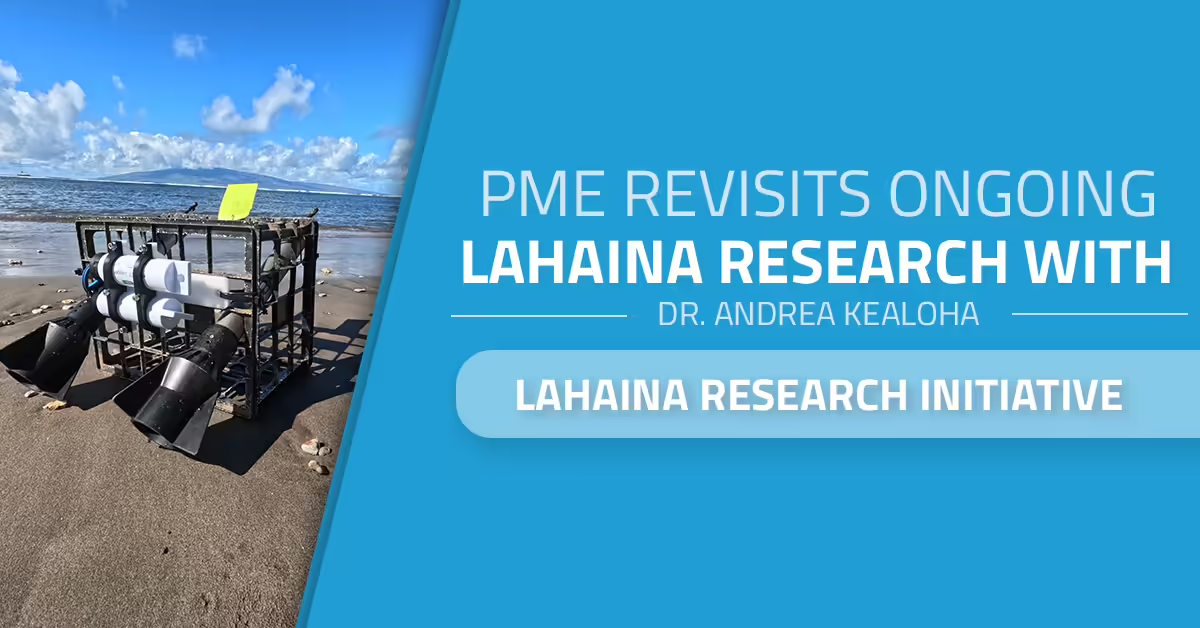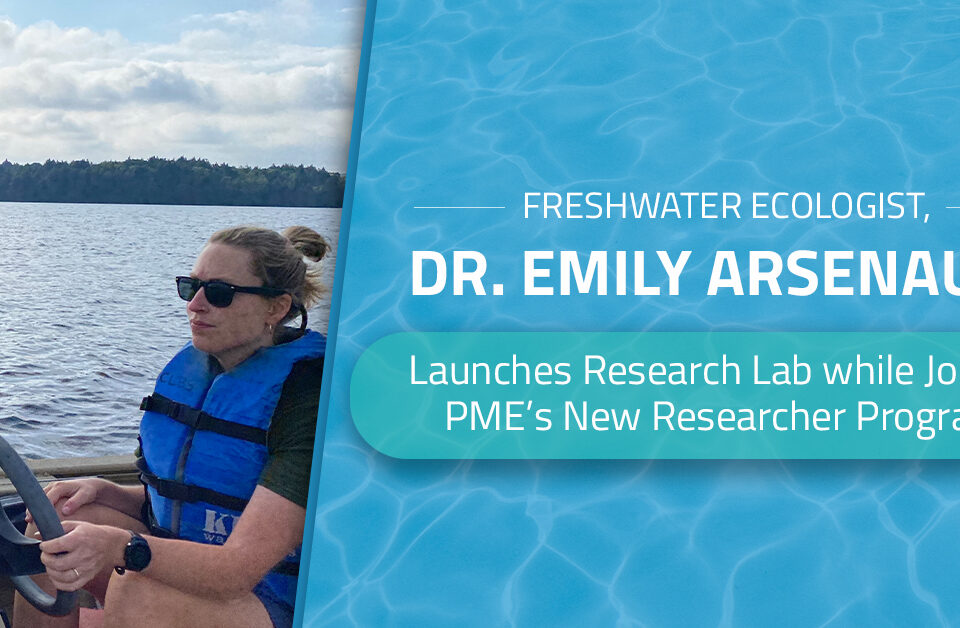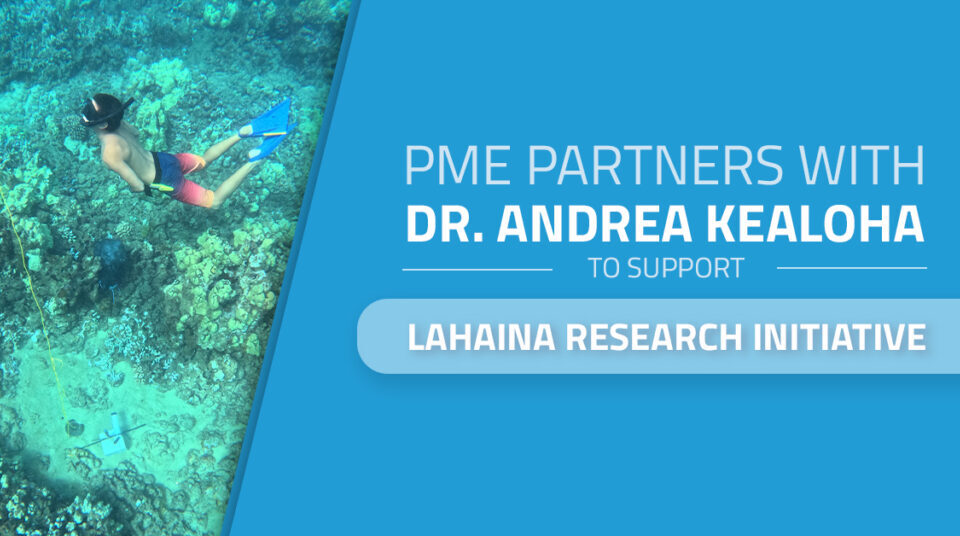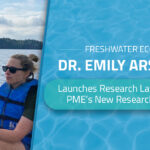
Freshwater Ecologist, Dr. Emily Arsenault Launches Research Lab while Joining PME’s New Researcher Program
May 21, 2024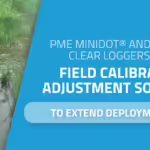
PME miniDOT® and miniDOT® Clear Loggers Offer Field Calibration Adjustmet Solution to Extend Deployment Time
October 1, 2024
Nearly a year has passed since wildfires carved through historic Lahaina in northwestern Maui, but the memory remains painfully fresh for those who call the coastal town their home. Once stretching along a picturesque Hawaiian shoreline, Lahaina was virtually decimated in August of 2023 after a stray spark swelled into a multi-faceted inferno. The fires claimed over one hundred lives and displaced thousands during the eight days it burned; its progress considerably hastened by drought conditions and high winds. Although the blaze has long since been extinguished, the community – and the local environment – will likely feel the effect of the fires for years. In the days and weeks following the Lahaina fires, humanitarian aid and emergency relief efforts were the top priorities for all, including scientists like Dr. Andrea Kealoha. A Maui native and coral reef specialist, Kealoha has long stressed the importance of community-oriented collaboration when working in indigenous spaces. Once members of the community began expressing an increasing concern for nearby coastal conditions, Kealoha knew it was time to get to work. A mere six months into monitoring, Kealoha and her colleagues have already amassed thousands of instrument measurements and hundreds of water samples. Such a robust collection might give the impression of a dataset nearing completion, but with some 20 sensors deployed along Lahaina’s coast, Kealoha anticipates this is only a fraction of the data to come.
Early Observations and Avenues of Inquiry
Thanks to their exhaustive efforts, Kealoha and her team have already observed several phenomena prompting further investigation, including onshore to offshore gradients in productivity and other biogeochemical features, as well as eutrophication and reduced oxygen following runoff events.
Kona storms are not a new occurrence, but recent years have seen slight shifts in their seasonality and severity. In light of this year’s particularly active season, Kealoha intends to investigate the effect of flush events caused by excessive rainfall on coastal water chemistry. Because Lahaina was built right on the shore, debris from the fire can reach ocean waters fairly quickly. With much of Lahaina’s infrastructure still significantly damaged, organic and inorganic particulate remains plentiful and easily transported by freshwater runoff. Recent near-shore water samples have indicated the occurrence of nutrient spikes following heavy rain, as well as the trace presence of metals; both of which further threaten Lahaina’s weakened ecological balance.
The global decline of coral reefs has long threatened the health of Earth’s oceans, leading Kealoha to propose her third study: a collaborative project designed to enhance understandings of how stressors associated with the fires are impacting ecosystem metabolism in Lahaina’s nearby coral reefs. Early testing has shown a slight increase in nocturnal hypoxia events. Some nocturnal hypoxia is to be expected, but the duration of these events appears extended following storm events. Kealoha notes these storms have also coincided with diminished rates of photosynthesis the subsequent day. Prolonged hypoxia can have devastating effects on biological processes and feeds into wider ocean acidification. Ultimately, calcification and dissolution, or the formation of reef structures, may be at a heightened risk. Puzzlingly, Kealoha’s team has also found evidence that some of these incidents are occurring outside of the burn zone, suggesting a wider range of impact than initially estimated.

Overwhelming Support Moves Lahaina Researchers
Only time will reveal the true extent of environmental damage wrought by the Lahaina fires; but if a silver lining exists in the tragedy, Kealoha and her team have most certainly found it. The scientific community can often come across as a vague abstraction referring to known and unknown peers, but Kealoha and her fellow researchers have felt the very real embrace of this community. In addition to the humanitarian aid that began shortly after the fires ended, Kealoha describes a global outpouring of support from researchers and scientists eager to assist by facilitating prospective studies. With collaborative efforts ranging from equipment donation or lending to assistance with extensive data analysis – Kealoha still finds herself humbled by the abundance of generosity.
In response to the disaster, Precision Measurement Engineering (PME) donated three miniDOT® Loggers equipped with antifouling measures to support Kealoha’s research. In a recent interview with PME, Kealoha described how these shows of support confirm the intrinsic value of her work. Kealoha noted the rarity of collaboration at such a scale, explaining “it’s a very unique way to do research and an example for how future research should be done.” As Kealoha and her team continue their work, they are heartened by the knowledge they are simultaneously creating a framework for future research in Lahaina.



